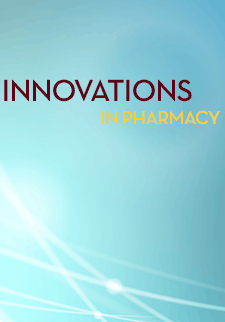Patients’ Awareness, Perceived Benefit, and Intent to Participate in Pharmacy Services
Alexandra L Born
The University of Toledo
Dr. Sharrel L Pinto
The University of Toledo
Dr. Amit S Patel
Dr. Sadik A Khuder
The University of Toledo
Dr. Varun A Vaidya
The University of Toledo
DOI: https://doi.org/10.24926/iip.v7i3.453
Keywords: Perceptions, Pharmacy, Services, Adherence, Benefits, Intent to participate, Awareness
Abstract
Objective: To determine patient awareness, perceived benefit, and intent to participate in 1) adherence packaging 2) Medication therapy management (MTM), 3) delivery, 4) automatic refill, and 5) refill synchronization.
Methods: This cross-sectional exploratory study used convenience sampling to survey participants from January 26th, 2016 and March 28th, 2016. A 25-question survey and service sheet were developed. The survey consisted of four sections 1) awareness, 2) perceived benefit, 3) intent to participate, and 4) demographics. Descriptive statistics, linear regression, and logistic regression were conducted.
Results: A total of 336 people were approached. Thirty-four people only filled out the demographic section and 32 refused to participate. Therefore, 270 surveys were considered usable for statistical analysis (90.4% response rate). The majority of the participants were not aware of refill synchronization (77.0%), MTM (64.8%), and adherence packaging (87.0%). There were multiple factors that contributed to how patients perceived the benefits of adherence packaging and automatic refill. Participants who were middle aged or older (p<.05), had a higher income (p<.01), were on multiple medications (p<.01), and from Ohio (p<.05) saw a higher benefit in adherence packaging. Participants who were middle aged or older (p<.05), male (p<.01), had a higher income (p<.01), had a Bachelor’s degree or lower (p<.05), and were aware of the service (p<.01) were more likely to see a benefit in automatic refill. In contrast there was only one predictor for refill synchronization showing that non-white participants were more likely to see a benefit. There were not any factors that contributed to how patients perceived the benefits of delivery, refill synch, and MTM.
There were several predictors that increased a patient’s intent to participate in a service. Some of the key predictors for each service included, participants who felt that adherence packaging will help them feel more in control of taking their medications were 2.81 times more likely to participate. Participants who felt that delivery would allow them more time to do other things were 6.89 times more likely to participate. Those who believed that automatic refill would help them take their medications on time were 8.30 times more likely to participate. Participants who felt refill synchronization would decrease multiple trips to the pharmacy were 2.26 times more likely to participate. Those that felt MTM would build their relationship with their pharmacist were 0.47 times more likely to participate. Overall, a consistent predictor for every service was feeling in control of taking their medications.
Conclusion: Overall, there is a lack of awareness of pharmacy services. Specifically services such as medication therapy management, refill synchronization, and adherence packaging. Pharmacists should take a proactive approach in informing patients of the services offered at their pharmacy. Additionally to increase participation, pharmacists can educate patients on how a service may help them feel more in control of taking their medications.
Type: Original Research


